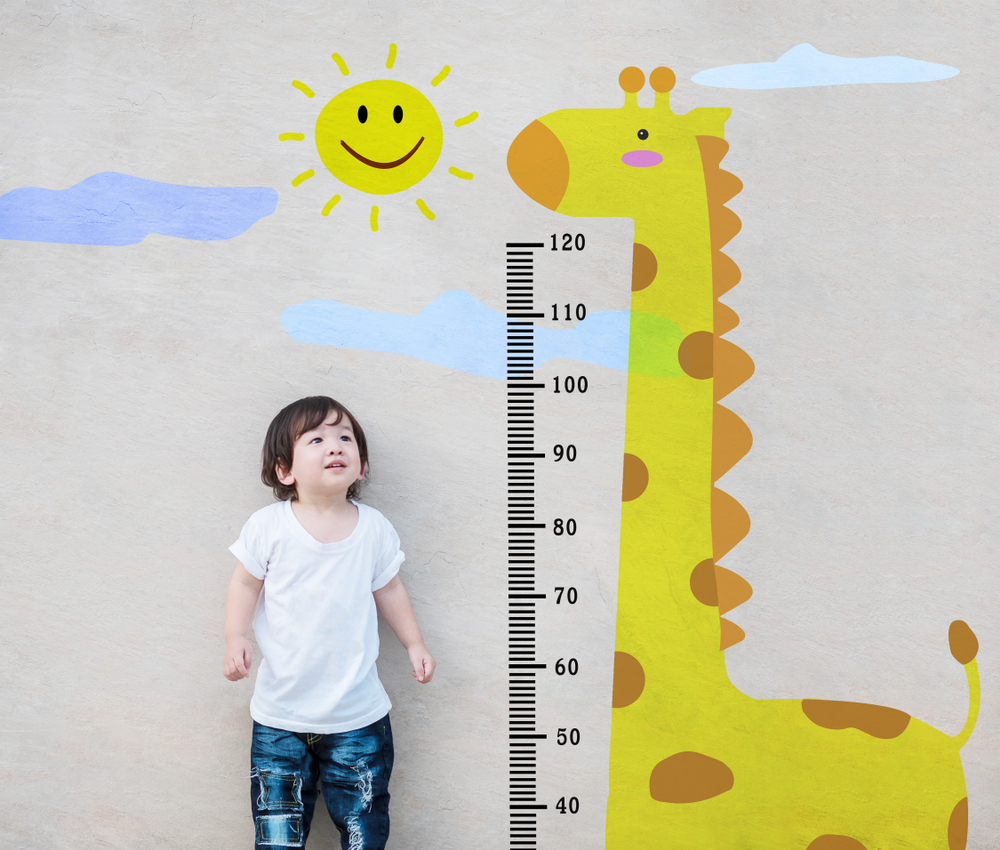Comparing lengths Normal Measurement Worksheets for Ages 7-8
4 filtered results
-
From - To
Our "Comparing Lengths Normal Measurement Worksheets for Ages 7-8" offer engaging activities designed to enhance measurement skills. These worksheets help children practice comparing the lengths of different objects, preparing them for more advanced mathematical concepts. Each activity is tailored to challenge and enthrall young learners, ensuring they comprehend the practical aspects of measuring in everyday life. With appealing visuals and clear instructions, kids can build their measuring confidence. A great resource for classroom or home settings, these worksheets seamlessly blend fun with fundamental math skills, making learning both enjoyable and effective. Perfect for 2nd graders aiming to excel in measurements.
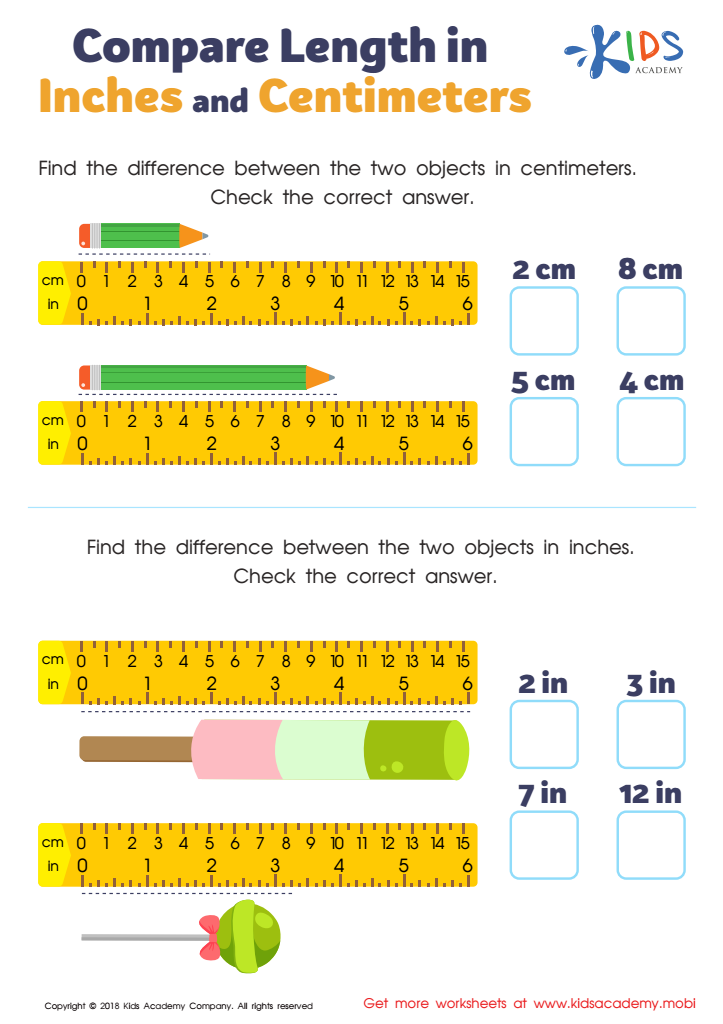

Compare Length in Inches and Centimeters Worksheet
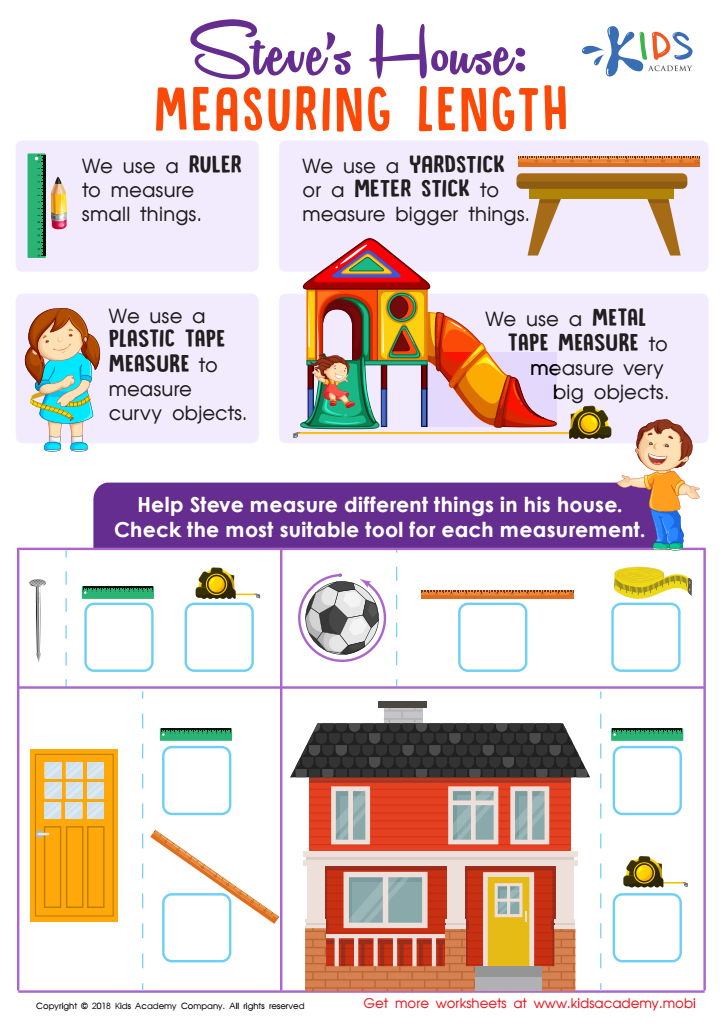

Steve's House: Measuring Length Worksheet
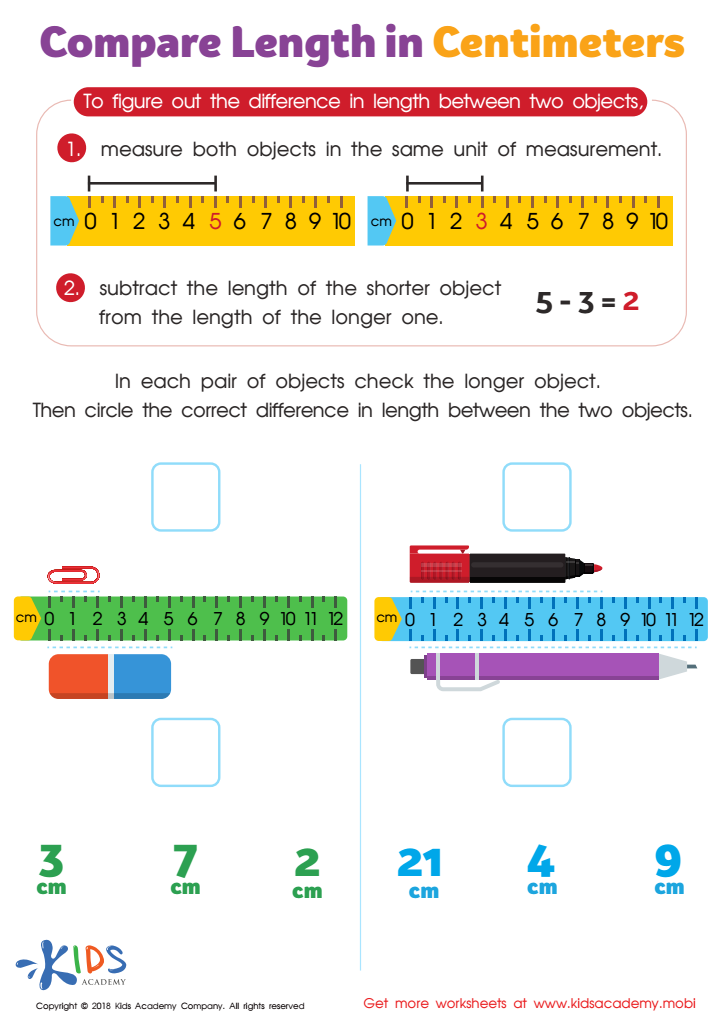

Compare Length in Centimeters Worksheet
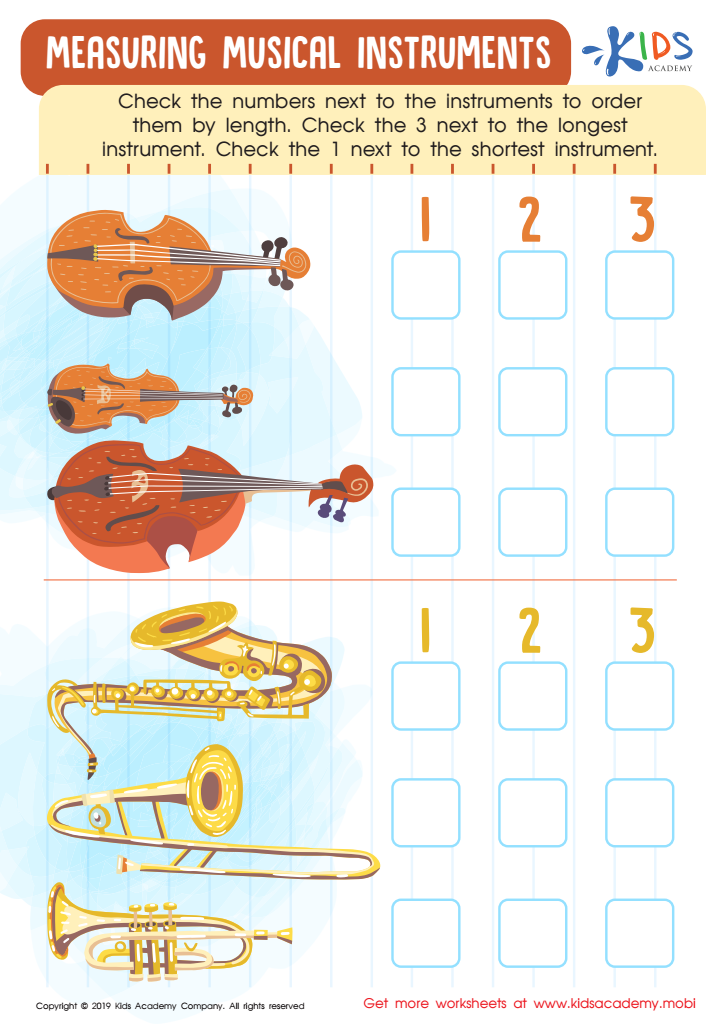

Measuring Musical Instruments Worksheet
Understanding the concept of length and measurement is fundamental for children aged 7-8 because it establishes a crucial foundation for their mathematical development and everyday life skills. At this age, children are transitioning from simple counting to more complex mathematical concepts. Comparing lengths involves recognizing differences and making indirect measurements, which cultivates critical thinking and problem-solving abilities.
When parents and teachers engage students in comparing lengths, they are fostering essential skills like observation, estimation, and comparison. These activities help children become familiar with units of measure, such as inches or centimeters, enabling a smoother transition to more abstract numerical concepts later on. Secondly, measuring and comparing lengths have practical applications; for instance, understanding dimensions is necessary for real-life activities like crafting, constructing, and even cooking.
Additionally, integrating these exercises encourages the use of proper vocabulary such as longer, shorter, taller, and similar terms, enhancing communication skills. Hands-on activities, like using rulers or comparing objects, boost fine motor skills and hand-eye coordination.
Engaging with these concepts early also helps to identify and address any learning difficulties, ensuring that no child falls behind. Therefore, it is essential for both parents and teachers to prioritize teaching length comparison and measurement to equip children with necessary and foundational skills for their future academic and personal lives.
 Assign to My Students
Assign to My Students





